What is happening with International Space Station
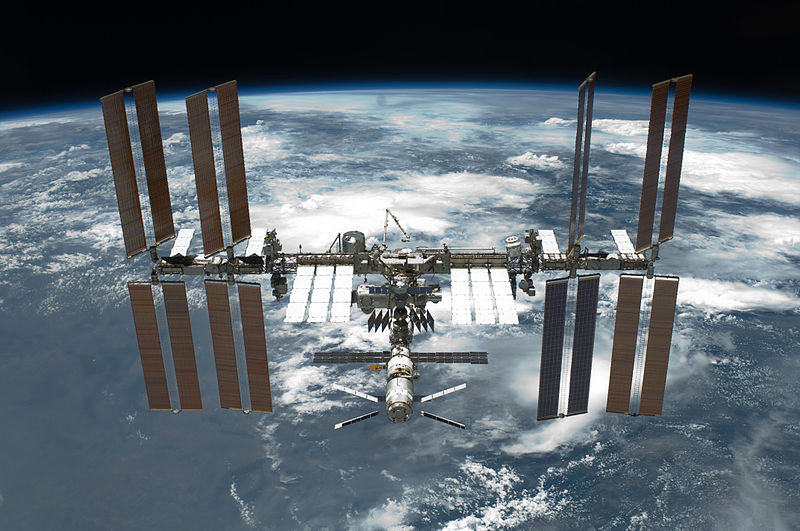
While some may dismiss such claims as hype, there is a real fear among NASA officials that, should the orbiting space station need to be abandoned, the risk for a catastrophic failure greatly increases.
The situation arose when Russia’s Soyuz rocket, carrying an automated re-supply ship for the station, had a failure of its third stage and crashed into Siberia before achieving orbit. While the Russian space agency investigates the crash the Soyuz rockets have been grounded indefinitely until both a cause and, if applicable, a solution to the problem have been found. Since the retirement of the U.S. Space Shuttle, the Soyuz is currently the only method of getting astronauts to the International Space Station.
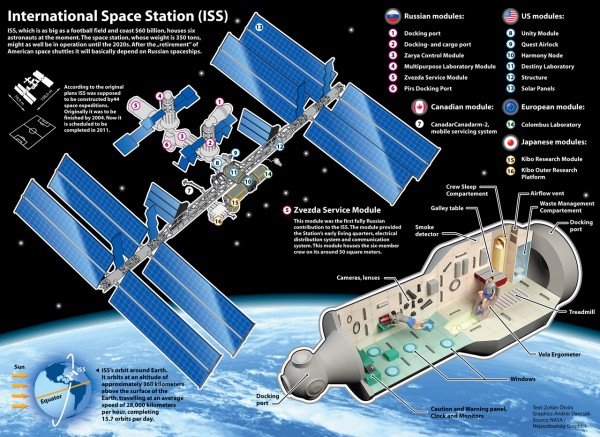
ISS currently has a 6-person crew on board that is scheduled to be reduced to three in late September, with the remaining three crew members returning in November. Each 3-person crew will come back to Earth in one of the two Soyuz capsules currently docked to the station. If the Russian rocket has not been cleared to return to flight the station will be abandoned once those last three crew members depart. The station is able to be operated remotely from the ground for a time, but without astronauts present, any critical issues that may arise that can’t be corrected via a remote link could cause a serious problem for the ISS. Any critical failure that requires repair could result in system damage or even the loss of the space station altogether. NASA risk assessment indicates that there is a 10% of losing the station if it stays abandoned up to 6 months but that risk balloons to 50% is it stays unmanned for 12 months. While this is something the world’s space agency fervently wish to avoid, there is also an obvious consensus that the safety of crews has to be the top priority. This means that not only can no replacement crew be launched until Soyuz is deemed safe for flight again, but also that the current crew can stay no longer than November to satisfy the “6 month” rule for staying aboard the station. The concern comes from exposure to radiation as well as the service life of the Soyuz capsules they’ll be returning home in (Soyuz capsules are rated for 200 days in space). (Examiner)
Two factors could prompt an unprecedented de-staffing of the outpost: the certified orbital lifetimes of the two Soyuz lifeboats now at the station, and flight rules that call for crews to return to Earth during daylight. As it stands, three station crew mates scheduled to return to Earth on Sept. 8 will remain onboard the outpost at least an extra week while the investigation into the loss or a robotic Progress space freighter continues. A third-stage Soyuz rocket shutdown caused the failure. The planned Sept. 21 launch of a new station crew is being postponed indefinitely. (FloridaToday)
Russia sank its Mir space station in the Pacific in 2001 after 15 years in operation. Skylab, America's first space station, fell from orbit in 1979 after six years in space. The International Space Station is the biggest orbiting outpost ever built and can sometimes be seen from the Earth with the naked eye. It's now big enough for six residents. (News.com.au)
The six-member crew aboard the International Space Station has plenty of food and fuel and will not be immediately affected by the crash of a Russian supply ship, according to NASA. Astronauts may need to leave the International Space Station if Russian Soyuz rockets remain grounded beyond mid-November, believes NASA.
The supply ship had been carrying about three tons of supplies toward the orbiting research lab. The retirement of the US space shuttle program earlier this year has left Russia as the sole nation capable of toting crew to the ISS aboard its Soyuz space capsules. Cargo missions can also be sent to the ISS on Japan's HTV and Europe's ATV supply ships, and two such missions are scheduled for early next year.
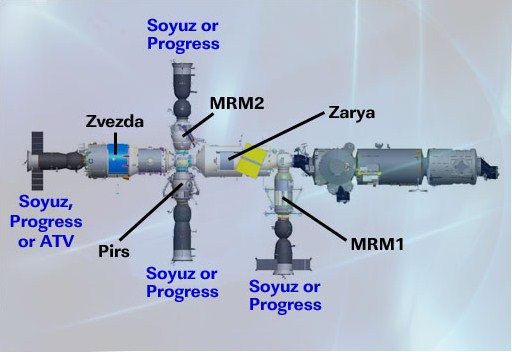
The Interfax news agency cited a Russian space analyst, Sergei Puzanov, as saying the space station had supplies already aboard that could last two to three months and "the situation with the loss of the Progress cannot be called critical."
In July of 2010, a Progress supply ship failed in its first automatic docking attempt due to equipment malfunction, but was connected with the orbiting laboratory two days later.
Last month's final mission by the US shuttle Atlantis, known as STS-135, carried up more than five tons of provisions for the outpost.
"STS-135 delivered extra supplies. With those + planned ATV & HTV launches, space station will have enough supplies for all of 2012," the US space agency said in a message on the microblogging site Twitter. "Our Russian colleagues will assess Progress data & determine root cause. Meanwhile, space station operations will continue normally."
It is kind of strange that they are saying the ISS needs to be abandoned because they don't have supplies, after Atlantis just delivered 5 tons of food.
If Russian Soyuz rockets remain grounded beyond mid-November, there will be no way to launch new crews before the current residents are supposed to leave. A joint board of the world’s space agencies can also operate the orbiting science project indefinitely without astronauts on board. The space agency hasn't considered de-manning the ISS since the Columbia disaster in the 80s. Russian officials made worldwide headlines in July with a controversial comment about de-orbiting the space station in 2020 — comments the space agency backpedaled from a day later. Autonomous operation is a very real possibility, however.
Abandoning the space station, even for a short period, would be an unpleasant last resort for the world's five space agencies that have spent decades working on the project. Astronauts have been living aboard the space station since 2000, and the goal is to keep it going until 2020. Even if the space shuttles still were flying, space station crews still would need Soyuz-launched capsules to serve as lifeboats. The capsules are certified for no more than 6? months in space, thus the need to regularly rotate crews. Complicating matters is the need to land the capsules during daylight hours in Kazakhstan, resulting in weeks of blackout periods.
Currently there are two Soyuz spacecrafts docked at the ISS. One is scheduled to bring back three astronauts in September and another is scheduled to bring the other three back in November. The spacecrafts have to come back because they were designed to spend only 200 days in space.
Without any Soyuz or Progress modules docked, the only way to maneuver will be Zvezda's engines. Each use degrades the engines so they've been trying not to use them unless they have to. Nonetheless, the longer Zvezda has to spend doing every maneuver, the more likely it is to fail.
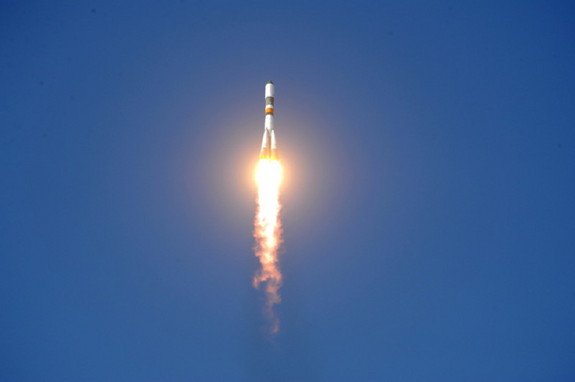
The space station evacuation is one possibility following the failure of the unmanned Russian supply spacecraft just after its Aug. 24 launch — a surprise given the reliable track record of its workhorse Soyuz rocket.
Only once before, after the 2003 space shuttle Columbia disaster, which destroyed that orbiter and its crew, did NASA consider evacuating the International Space Station — a process agency officials call "de-manning." In that case, though, managers decided to continue sending crews to the station on Soyuz rockets until the shuttle was ready to fly again. The largest risk of evacuating the station is the possibility that some major component could break, or a significant anomaly could occur, and no astronauts would be available on orbit to fix it.
Russia now delayed the return to Earth of three astronauts. The RIA news agency said those members of the crew would now return to Earth around Sept. 16 instead of Sept. 8 and new crew members would blast off in late October or early November instead of on Sept. 22. The Soyuz has been extremely reliable over the decades; this was the first failure in 44 Russian supply hauls for the space station. Even with such a good track record, many in and outside NASA were concerned about retiring the space shuttles before a replacement was ready to fly astronauts.
Late this year, commercial company SpaceX in California plans to launch its own rocket and supply ship to the space station, something NASA encourages. But a smaller, three-man crew on board the space station may require special training for the SpaceX docking. (FOXnews)
How Would NASA & Russia Evacuate the International Space Station?
The space station evacuation is one possibility following the failure of the unmanned Russian supply spacecraft just after its Aug. 24 launch — a surprise given the reliable track record of its workhorse Soyuz rocket.
Only once before, after the 2003 space shuttle Columbia disaster, which destroyed that orbiter and its crew, did NASA consider evacuating the International Space Station — a process agency officials call "de-manning." In that case, though, managers decided to continue sending crews to the station on Soyuz rockets until the shuttle was ready to fly again.
The largest risk of evacuating the station is the possibility that some major component could break, or a significant anomaly could occur, and no astronauts would be available on orbit to fix it.

In a new NASA-sponsored report, the National Research Council finds that the space agency needs a better plan for dealing with space junk before it gets out of hand and damages valuable spacecrafts.
"The current space environment is growing increasingly hazardous to spacecraft and astronauts," said Donald Kessler, chair of the committee that wrote the report and retired head of NASA's Orbital Debris Program Office. "NASA needs to determine the best path forward for tackling the multifaceted problems caused by meteoroids and orbital debris that put human and robotic space operations at risk."
According to NASA, more than 500,000 pieces of debris, or "space junk," is tracked as its orbits the Earth, 20,000 pieces of which are larger than a softball. These pieces are not just meandering by, however; they can travel at speeds up to 17,500 miles per hour. Even something as small as a paint fleck can damage a satellite or spacecraft, NASA said. These objects can be anything from dead satellites to fragments that broke off other devices after a crash.
The report finds that while NASA has used its space junk-related resources well, it can't really keep pace with the increasing hazards posed by this debris. NASA has several meteoroid and orbital debris programs, but at this point, there is no single management and budget structure that can efficiently coordinate all the efforts. NASA needs to come up with a strategic plan for how to handle the growing amount of space debris, including short-term and long-term goals, the report found.
To keep track of new debris, meanwhile, the report recommends a more organized record of spacecraft problems, so officials can be kept abreast of what's out there.
In June, the crew aboard the International Space Station got a scare when a piece of space debris got a bit too close for comfort, prompting them to take cover inside Russian space capsules. Lucky for them, the debris only came within 850 feet of the ISS before continuing on its way. In April, a piece of orbital debris making its way through the universe gave officials a similar scare. The debris, from the Chinese FENGYUN 1C satellite, could have affected the Expedition 27 spacecraft, which had launched from Earth the night before. (PCMag)

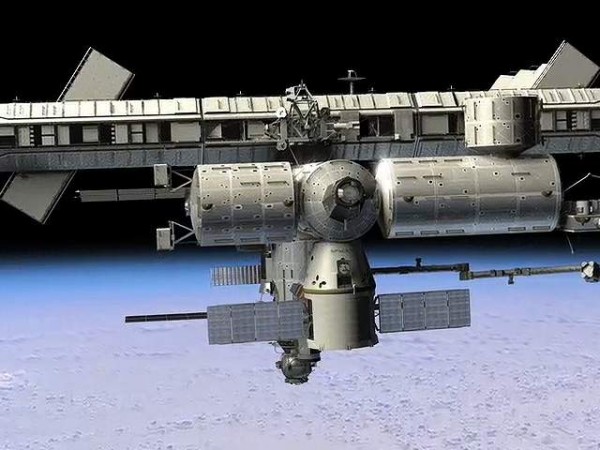
nanoduck commented on The Watchers:
I’ve heard that it was predicted that it will explode and fall.
I mentioned this months ago.